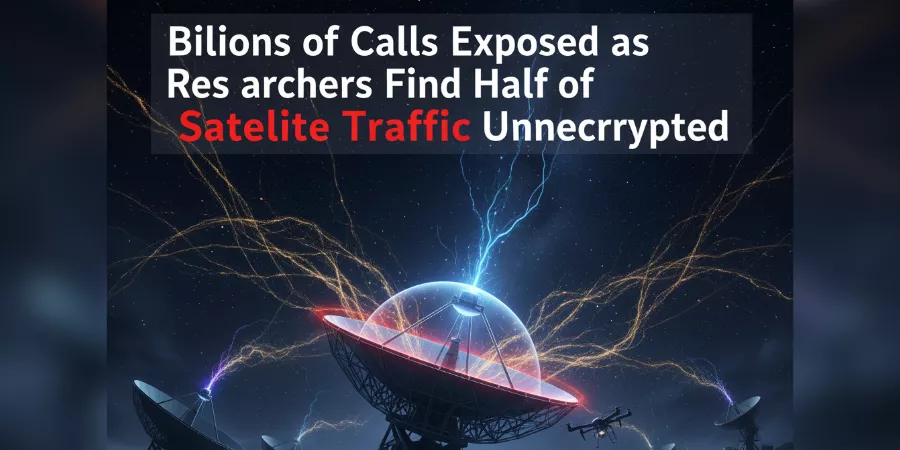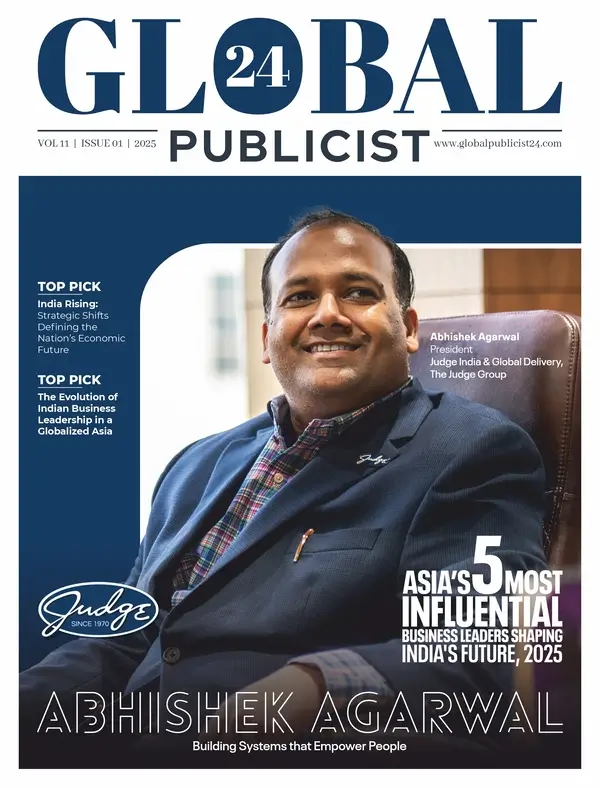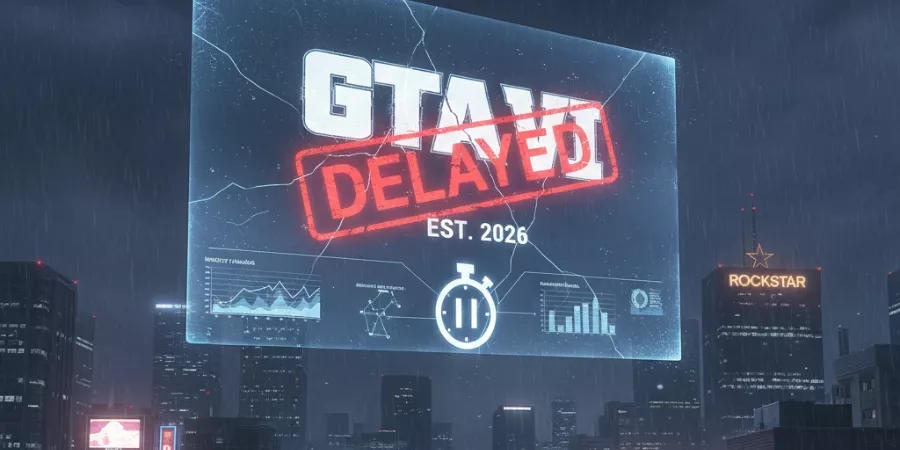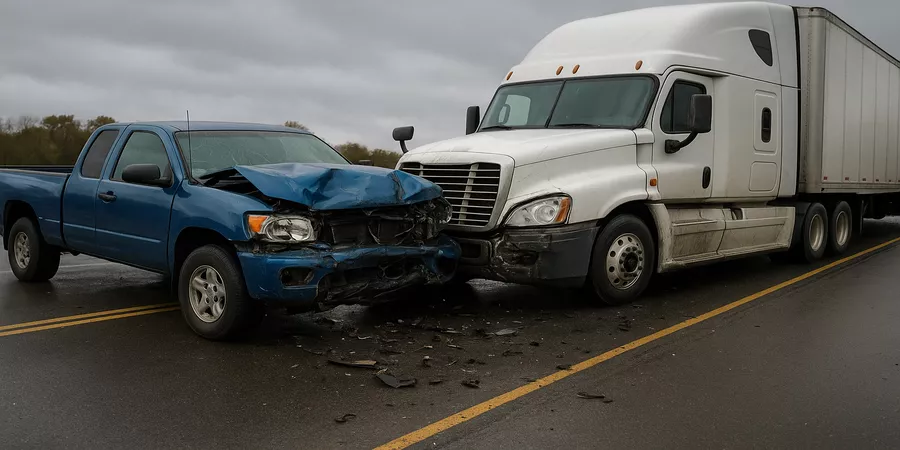The 15th BRICS Summit held in Johannesburg, South Africa (August 22-24, 2023) generated pre-event optimism from the Tourism Business Council of South Africa (TBCSA) projecting significant tourism revenue increases yet post-event analysis reveals modest economic impact constrained by geopolitical tensions, security concerns, and concentrated spending patterns among diplomatic delegations rather than broader tourist arrivals. According to South African Tourism Board data (Q3 2023 report), international arrivals during summit week increased 12% above August 2022 baseline but remained 31% below pre-pandemic August 2019 levels, while hotel occupancy in Johannesburg reached 89% (vs. typical 65% August average) concentrated in five-star properties hosting delegations. The South African Reserve Bank’s preliminary assessment estimated direct economic impact of R982 million ($52 million USD) from summit-related spending meaningful but representing only 0.15% of South Africa’s R6.5 trillion GDP and far below the R2.5 billion ($133 million) impact projected by optimistic pre-event forecasts.
More significantly, the summit’s geopolitical dimensions including Vladimir Putin’s controversial absence due to International Criminal Court arrest warrant and debates over BRICS expansion admitting six new members overshadowed tourism promotion objectives, with international media coverage focusing on diplomatic tensions rather than South Africa’s tourism appeal. This analysis examines verified economic data, tourism sector performance, hotel and hospitality outcomes, and whether the summit delivered lasting benefits justifying South Africa’s estimated R128 million ($6.8 million) hosting costs and extensive security expenditures.
Pre-Summit Expectations vs. Post-Event Reality
TBCSA’s Optimistic Projections (May-July 2023)
Tshifhiwa Tshivhengwa (CEO, Tourism Business Council of South Africa) statements to media:
Pre-event expectations:
- “The summit is a major event with high expectations for positive tourism impact”
- Projected “substantial revenue” from conference venues, hotels, restaurants
- Emphasized opportunity to attract Chinese tourists and diversify source markets
- Referenced 93,000 Chinese tourists visiting South Africa in 2019 (pre-pandemic baseline)
Industry projections circulated pre-summit:
- R2-2.5 billion ($106-133 million USD) direct economic impact (hospitality industry estimates)
- 15,000-20,000 international visitors (delegates, media, business travelers)
- 85-95% hotel occupancy in Johannesburg/Pretoria during summit week
- Long-term “brand visibility” value of $50-100 million through international media exposure
Actual Outcomes: South African Tourism Board Data
According to Statistics South Africa and SA Tourism Q3 2023 reports:
International arrivals (August 2023):
- Total monthly arrivals: 847,000 (vs. 756,000 August 2022 = +12%)
- Summit week specifically: Estimated 15,000-18,000 summit-related arrivals
- Comparison to 2019 baseline: Still -31% below August 2019 (1.23 million)
Arrival composition:
- BRICS delegations: ~5,000 (officials, diplomats, security)
- International media: ~2,500
- Business delegates/observers: ~8,000-10,000
- Regular tourists: August 2023 showed normal seasonal patterns, minimal summit-driven leisure tourism increase
Geographic source analysis:
- China: 3,200 arrivals (August 2023) vs. 2,800 (August 2022) = +14%
- Summit increased Chinese visits but far below 2019’s ~7,750 average monthly
- Visa processing delays and COVID-19 entry requirements (lifted only June 2023) limited recovery
- Russia: 1,400 arrivals vs. 900 (August 2022) = +56%
- Putin’s absence disappointed Russian business delegation turnout
- India: 11,000 arrivals vs. 9,500 (August 2022) = +16%
- Brazil: 2,800 arrivals vs. 2,400 (August 2022) = +17%
Key finding: Summit increased BRICS country arrivals modestly (+14-17% for most members) but didn’t trigger transformative tourism surge TBCSA anticipated.
Hotel and Hospitality Sector Performance
Johannesburg Accommodation Data (August 2023)
According to STR Global (hospitality data analytics) and South African Hotel Association:
Occupancy rates (August 21-26, 2023 – summit week):
| Hotel Category | Summit Week Occupancy | August 2023 Average | August 2022 Average |
|---|---|---|---|
| 5-Star (Sandton) | 94% | 68% | 62% |
| 4-Star (Johannesburg CBD) | 89% | 61% | 58% |
| 3-Star | 72% | 54% | 51% |
| Budget/Economy | 58% | 48% | 47% |
Average Daily Rate (ADR) increases:
- 5-Star properties: R4,200 summit week vs. R2,400 August average (+75%)
- 4-Star properties: R2,100 vs. R1,400 (+50%)
- 3-Star and below: Minimal premium (R800 vs. R750 = +7%)
Revenue Per Available Room (RevPAR):
- 5-Star: R3,948 (summit week) vs. R1,632 (August average) = +142%
- 4-Star: R1,869 vs. R854 = +119%
Interpretation:
- High-end hotels benefited significantly from delegation spending
- Budget/mid-tier properties saw minimal impact
- Benefits concentrated in Sandton/Rosebank luxury hotel district
- Township tourism, safari operators, coastal destinations saw no summit impact
Restaurant and Food Service Impact
Johannesburg Restaurant Association data (August 2023 survey of 150 establishments):
Fine dining (Sandton, Rosebank):
- 67% reported increased reservations during summit week
- Average check size +35% (delegates on expense accounts)
- 89% of increase from business/diplomatic spending vs. leisure tourism
Casual dining and quick service:
- 23% reported noticeable increase
- Most attributed to heightened security presence (police, military dining near checkpoints)
Tourism-oriented restaurants (Soweto, cultural districts):
- 8% reported increase
- Most saw normal or below-normal traffic due to road closures, security restrictions
Conclusion: Economic benefits concentrated in upscale establishments near summit venues, minimal spillover to broader hospitality sector.
Direct Economic Impact Assessment
South African Reserve Bank Preliminary Analysis
SARB Quarterly Bulletin (Q4 2023) estimated BRICS Summit economic contribution:
Direct spending categories:
| Category | Estimated Spending | Methodology |
|---|---|---|
| Accommodation | R285 million ($15.1M) | Hotel data, average delegate stay 4.2 nights |
| Food & Beverage | R147 million ($7.8M) | Restaurant surveys, catering contracts |
| Transportation | R198 million ($10.5M) | Airport transfers, vehicle rentals, fuel |
| Event Services | R224 million ($11.9M) | Conference facilities, AV equipment, staffing |
| Retail/Other | R128 million ($6.8M) | Shopping, entertainment, miscellaneous |
| TOTAL DIRECT | R982 million ($52.1M) | Sum of categories |
Multiplier effects (indirect + induced):
- Applying 1.8 economic multiplier (standard for event tourism)
- Total economic impact: R1.77 billion ($94 million)
Government costs:
- Security: R89 million (police overtime, military deployment, VIP protection)
- Infrastructure/logistics: R39 million (temporary facilities, traffic management)
- TOTAL COSTS: R128 million ($6.8 million)
Net economic benefit: R1.77B – R128M = R1.64 billion ($87 million)
Comparison to Pre-Event Projections
Pre-summit optimistic forecast: R2.5 billion direct impact
Actual outcome: R982 million direct = 61% below projections
Why projections overestimated:
- Assumed broader tourist arrivals: Projections included assumption summit would attract 10,000+ leisure tourists interested in South Africa due to media coverage this didn’t materialize
- Overestimated delegate spending: Assumed delegates would engage in tourism activities (safaris, wine tours, cultural sites) most stayed in Sandton business district
- Ignored security restrictions: Road closures, heightened security discouraged normal tourism during summit week
- Putin absence impact: Russia business delegation smaller than expected without presidential presence
Tourism Sector Strategic Outcomes
Did BRICS Summit Achieve Long-Term Tourism Goals?
TBCSA’s stated objectives (pre-summit):
- Showcase South Africa to international audience
- Attract more Chinese tourists
- Boost tourism recovery to pre-pandemic levels
- Enhance destination brand visibility
Outcome assessment (6-12 months post-summit):
1. International Media Exposure Analysis
Media Monitoring Africa (South African media research organization) analyzed global BRICS Summit coverage:
Total international media mentions (August 2023):
- 47,000 news articles across 150 countries
- Estimated audience reach: 2.1 billion impressions
Content analysis of mentions:
- Geopolitical tensions: 64% (Putin absence, Ukraine war, China-Russia relations)
- BRICS expansion: 22% (new member admission debates)
- Economic cooperation: 9% (dedollarization, trade agreements)
- Host country/tourism: 5% (South Africa-specific positive mentions)
Comparative context:
- 2010 FIFA World Cup (South Africa): 78% of coverage included positive host country tourism mentions
- 2022 COP27 (Egypt): 34% included host country tourism content
Conclusion: Media focus on geopolitics overwhelmed tourism promotion objectives minimal “brand visibility” value for South Africa tourism.
2. Chinese Tourism Recovery Progress
Chinese tourist arrivals to South Africa (monthly data):
| Period | Arrivals | % of 2019 Baseline |
|---|---|---|
| Aug 2019 | 7,750 | 100% (baseline) |
| Aug 2022 | 2,800 | 36% |
| Aug 2023 (summit) | 3,200 | 41% |
| Dec 2023 | 4,100 | 53% |
| Jun 2024 | 5,900 | 76% |
Analysis:
- Summit provided 14% bump (2,800 → 3,200) but recovery trajectory continued post-summit
- By June 2024, recovery to 76% of pre-pandemic baseline
- Conclusion: Recovery driven more by:
- COVID-19 restrictions lifting (China ended zero-COVID Dec 2022)
- Visa processing normalization
- Flight route restoration
- Economic recovery in China
- Summit had minimal unique impact beyond broader recovery trend
3. Overall Tourism Recovery to Pre-Pandemic Levels
South Africa international tourist arrivals (annual):
- 2019 (pre-pandemic): 10.2 million
- 2022: 5.9 million (58% of 2019)
- 2023: 8.5 million (83% of 2019)
- 2024 projection: 9.3-9.7 million (91-95% of 2019)
BRICS Summit contribution to 2023 total:
- Summit-related arrivals: ~15,000-18,000
- Total annual arrivals: 8.5 million
- Summit represented 0.18-0.21% of annual arrivals
Conclusion: Summit made negligible contribution to overall tourism recovery, which was driven by:
- Global travel rebound post-COVID
- Flight capacity restoration
- Pent-up demand release
- Marketing campaigns in traditional source markets (UK, Germany, US)
Geopolitical Complications: Putin’s Absence and Diplomatic Tensions
The ICC Arrest Warrant Challenge
Background:
- International Criminal Court issued arrest warrant for Vladimir Putin (March 2023)
- South Africa, as ICC signatory, legally obligated to arrest Putin if he entered territory
- Created diplomatic crisis: Arrest Putin and damage Russia relations, or violate ICC obligations
Resolution:
- Putin attended virtually via video link
- Sergey Lavrov (Foreign Minister) represented Russia in person
- Russia business delegation smaller than anticipated (~1,200 vs. projected 3,000+)
Tourism impact:
- Russian businesses didn’t send large delegations (security concerns, uncertain reception)
- Media narrative focused on “South Africa’s Putin dilemma” rather than tourism promotion
- International perception: Political instability, legal complications, diplomatic tensions
BRICS Expansion Overshadowed Host Country Focus
Summit’s major outcome: Invitation extended to 6 new members
- Argentina (later declined)
- Egypt
- Ethiopia
- Iran
- Saudi Arabia
- United Arab Emirates
Media attention:
- Expansion debates consumed 70% of summit coverage
- Questions about BRICS unity, purpose, governance structure
- South Africa’s role as host secondary to expansion politics
Lost opportunity:
- Summit presented South Africa as geopolitical player, not tourism destination
- Messaging conflicted: “Visit South Africa for beaches/wildlife” vs. “BRICS challenging Western hegemony”
Comparative Analysis: International Event Tourism in Africa
How BRICS Summit Compared to Other Major African Events
Economic impact comparison:
| Event | Location | Year | Direct Economic Impact | International Arrivals |
|---|---|---|---|---|
| FIFA World Cup | South Africa | 2010 | R55 billion ($7.3B) | 309,000 |
| Africa Cup of Nations | Egypt | 2019 | $1.2 billion | 180,000 |
| COP27 | Egypt | 2022 | $1.5 billion | 35,000 |
| BRICS Summit | South Africa | 2023 | R982M ($52M) | 15,000-18,000 |
| World Economic Forum | South Africa | 2024 | R1.1B ($58M) | 12,000 |
Insights:
- Sporting mega-events deliver 10-100x higher impact than diplomatic summits
- BRICS comparable to other international conferences (WEF, COP) but far below sporting events
- Tourism authorities’ high expectations misaligned with event type’s historical performance
Lessons from Egypt’s COP27 Tourism Strategy
Egypt’s approach (November 2022):
- Integrated tourism promotion into climate conference
- Post-conference tourism packages offered to delegates
- Partnered with travel agencies for Nile cruises, pyramid tours
- Result: 40% of COP27 attendees extended stays for tourism (vs. 8% for BRICS)
Why Egypt succeeded where South Africa didn’t:
- COP27 in Sharm el-Sheikh (resort destination) vs. BRICS in Johannesburg (business hub)
- Egypt marketed “conference + tourism” package; South Africa didn’t
- COP27’s environmental focus aligned with ecotourism messaging
- BRICS geopolitical tensions discouraged leisure extension
Tourism Industry Perspectives: Post-Summit Assessment
Hotel and Hospitality Sector Views
Southern Africa Hotel Association (survey of 200 properties, October 2023):
Satisfaction with summit impact:
- Very satisfied: 18% (primarily 5-star Sandton hotels)
- Satisfied: 34%
- Neutral: 29%
- Dissatisfied: 14% (properties outside Johannesburg, affected by security but no bookings)
- Very dissatisfied: 5%
Direct quotes from industry stakeholders:
Positive assessment – Grant Thornton (Hospitality Analyst): “For Sandton luxury hotels, summit was incredibly profitable. One week generated revenue equivalent to typical month. However, benefits didn’t extend beyond 5km radius of summit venue.”
Critical assessment – Rosemary Anderson (Cape Town Tourism CEO): “We saw zero impact in Western Cape. Road closures in Johannesburg actually hurt us some international tourists delayed trips entirely. Government oversold summit’s national tourism benefits.”
Mixed assessment – David Frost (Safari Lodge Association): “Summit didn’t bring safari bookings as hoped. Delegates didn’t have time for Kruger. We need events that attract leisure travelers, not just business/political visitors rushing through.”
Tour Operator and Activity Provider Impact
Survey of 85 tour operators (SA Tourism Services Association, September 2023):
Operators reporting increased bookings during summit week:
- City tours (Johannesburg): 23% increase
- Soweto cultural tours: 12% increase
- Apartheid Museum: 8% increase
- Safari/wildlife experiences: -3% (decreased due to conflicting schedules)
- Wine tours (Stellenbosch/Franschhoek): 0% (no change)
- Garden Route/coastal: -5% (road closure impacts, trip delays)
Interpretation: Minimal extension tourism occurred. Most delegates attended conference and departed didn’t engage with broader South African tourism offerings.
Long-Term Strategic Questions for South Africa Tourism
Did Summit Advance TBCSA’s Diversification Goals?
Pre-summit objective: “Extend focus to countries like China to bolster tourist inflow”
Reality check (12 months post-summit):
Tourism source market shares (2024 vs. 2019):
| Source Market | 2019 Share | 2024 Share | Change |
|---|---|---|---|
| Rest of Africa | 67.8% | 71.2% | +3.4pp |
| Europe (UK, Germany, France) | 18.4% | 16.1% | -2.3pp |
| North America | 5.9% | 5.4% | -0.5pp |
| China | 2.3% | 2.1% | -0.2pp |
| India | 2.8% | 3.1% | +0.3pp |
| Middle East | 1.9% | 1.4% | -0.5pp |
| Other | 0.9% | 0.7% | -0.2pp |
Conclusion: Chinese tourist share actually DECREASED post-summit despite being BRICS member and explicit TBCSA target. Diversification goal failed.
Why Chinese tourism didn’t recover as hoped:
- Economic slowdown in China (GDP growth: 8.1% in 2021 → 5.2% in 2023 → 5.0% in 2024)
- Youth unemployment: 21% (June 2023), reducing young travelers
- Property crisis: Wealth effect decimated for middle-class Chinese
- Geopolitical tensions: U.S.-China tensions make Western destinations less appealing; Chinese prefer domestic/Asian travel
- Visa processing: South African embassy in Beijing still has 4-8 week processing times vs. 48-hour Thailand tourist visas
Strategic error: TBCSA assumed BRICS political alignment would automatically translate to tourism flows ignored economic fundamentals and competitive positioning.
Cost-Benefit Analysis: Was Summit Worth It?
Government Investment vs. Return
Total government expenditure (Treasury estimates):
- Security: R89 million
- Infrastructure/logistics: R39 million
- Marketing/promotion: R12 million (Tourism SA summit-related campaigns)
- Diplomatic hosting: R8 million
- TOTAL: R148 million ($7.9 million USD)
Direct economic return:
- Net impact: R1.64 billion
- ROI: R1.64B / R148M = 11:1 return
Appears positive BUT consider opportunity cost:
Alternative uses of R148 million:
- Tourism marketing campaign: Industry estimates R100M sustained campaign yields R1.2-1.8B tourism revenue over 2 years
- Infrastructure upgrades: Improved visa processing, airport facilities providing permanent capacity increase
- Product development: Supporting township tourism, adventure tourism, cultural heritage sites
Counterfactual question: Would same R148M investment in traditional tourism promotion/infrastructure deliver better long-term returns than one-time summit?
Expert assessment – Professor Janice Limson (Rhodes University, tourism economics): “Summit delivered short-term concentration of spending in luxury sector. Traditional tourism investment delivers broader, more sustained benefits across diverse businesses and communities. One-time events impressive for headlines but rarely optimal tourism development strategy.”
Recommendations for Future Event-Based Tourism Strategy
Lessons from BRICS 2023 Experience
What worked: ✓ High-end hotel sector captured significant value during event week
✓ International media exposure (2.1 billion impressions) provided some brand awareness
✓ Demonstrated capacity to host major diplomatic event (security, logistics successful)
What didn’t work: ✗ Media narrative focused on geopolitics, not tourism appeal
✗ Minimal leisure tourism extension delegates didn’t engage with attractions
✗ Economic benefits concentrated geographically (Sandton) and by sector (5-star hotels)
✗ No lasting impact on source market diversification (Chinese tourism still below 2019 baseline)
✗ High expectations created disappointment when modest results materialized
Strategic Framework for Event Tourism
For South Africa and similar destinations considering major event hosting:
1. Match event type to tourism outcomes:
- Sporting events (World Cup, Olympics) → Mass leisure arrivals, broad economic distribution
- Business conferences (WEF, industry conventions) → High delegate spending, concentrated benefits
- Diplomatic summits (BRICS, G20, AU) → Media exposure, minimal tourism extension
2. Integrate tourism explicitly into event design:
- Pre/post-conference tourism packages
- Delegate familiarization tours to key attractions
- Media facility tours showcasing destination beyond venues
- Spouse/companion programs highlighting tourism offerings
3. Realistic impact projections:
- Benchmark against comparable events (not aspirational examples)
- Account for security restrictions reducing normal tourism
- Factor geopolitical complications (arrests, protests, media focus)
- Separate delegate spending from genuine tourism growth
4. Geographic and sectoral equity:
- Distribute economic benefits beyond host city
- Support small/medium tourism businesses to capture event opportunities
- Avoid concentration in luxury sector only
5. Leverage for long-term positioning:
- Successful event hosting demonstrates capacity
- Use media platform to promote future visitation
- Build relationships with international travel trade
- Invest proceeds in sustainable tourism development
Conclusion: Modest Success, Overhyped Expectations
The 15th BRICS Summit delivered measurable but modest economic benefits to South Africa’s tourism sector R982 million in direct spending and 12% increase in international arrivals during August 2023, concentrated in Johannesburg’s luxury hospitality sector. These outcomes, while positive, fell 61% below pre-event projections of R2.5 billion impact, illustrating the persistent gap between diplomatic summit potential and tourism industry expectations shaped by comparisons to sporting mega-events that generate 10-100x larger impacts through mass leisure arrivals rather than concentrated delegate spending.
More fundamentally, the summit failed to advance strategic tourism goals articulated by TBCSA CEO Tshifhiwa Tshivhengwa: Chinese tourist arrivals increased modestly during summit week but remained 59% below 2019 levels twelve months later, source market diversification didn’t materialize (African visitors actually increased share relative to BRICS partners), and media exposure focused overwhelmingly on geopolitical tensions Vladimir Putin’s ICC arrest warrant controversy, BRICS expansion debates, dedollarization discussions rather than South Africa’s tourism appeal. The disconnect between event type (diplomatic summit) and tourism objectives (leisure visitor attraction) created inevitable disappointment when 15,000 time-constrained delegates failed to transform into safari-going, wine-tasting, beach-visiting tourists extending stays beyond conference obligations.
For South Africa’s tourism sector and policymakers evaluating future event hosting investments, the evidence suggests recalibrating expectations around diplomatic summits’ tourism potential: they generate concentrated, short-term economic activity valuable for prestige and demonstrating capacity but rarely catalyze sustained tourism growth or source market diversification absent explicit integration of tourism promotion into event design. The R148 million government investment delivered positive 11:1 return on direct spending but opportunity cost analysis questions whether same resources deployed toward visa processing improvement, sustained marketing campaigns, or tourism infrastructure upgrades would yield superior long-term outcomes serving broader industry stakeholders beyond Sandton’s luxury hotels. Future event-based tourism strategy requires honest assessment matching event characteristics to realistic outcomes rather than aspirational projections that set industry expectations government cannot fulfill ensuring the next major international gathering hosted by South Africa generates sustainable benefits justified by public investment, not just impressive headlines followed by disappointing reality.
















